#softimage
Explore tagged Tumblr posts
Text
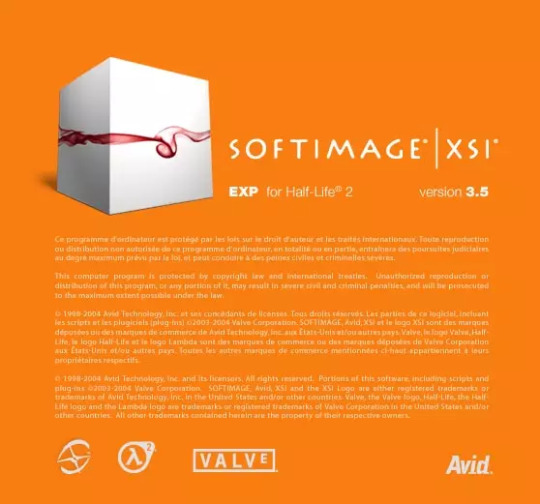
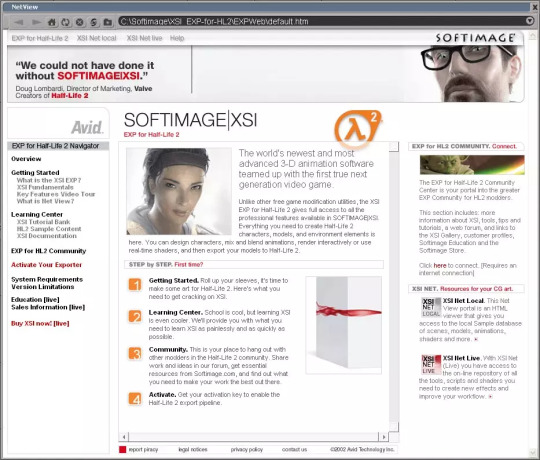
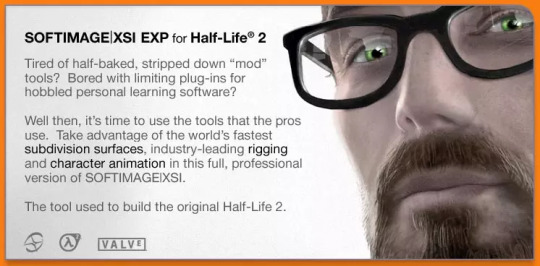

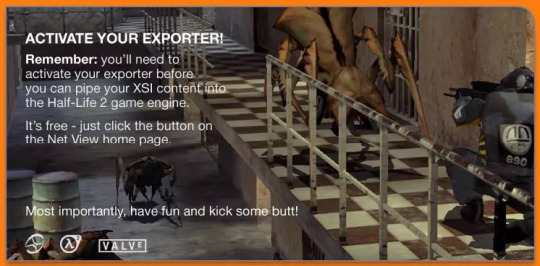
Softimage XSI EXP for Half-Life 2
#half life#half life 2#softimage#source link has instructions on how to use this program#looks like a pain in the ass to set up though#I would just use the SourceIO plugin for Blender instead
8 notes
·
View notes
Text
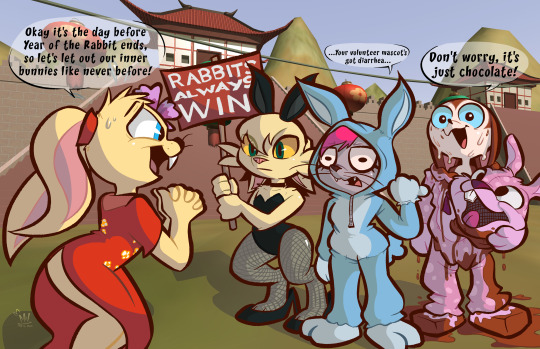
Only one more day of Year of the Rabbit... make it last!
I've grown to love drawing 2D characters integrated into cheesy 3D environments...
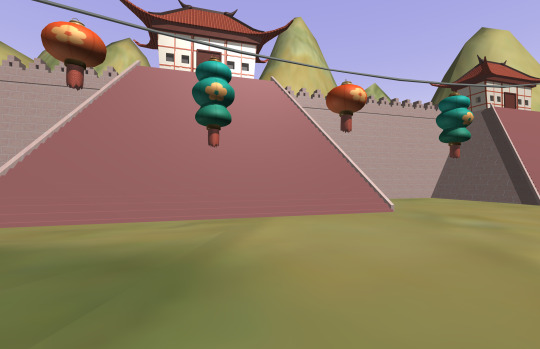
Here's the original 3D render, made in Softimage 3D, as I've been doing recently ^^
#lunar new year#year of the rabbit#rabbit#oc#furry#andy#jackie#raven#chocolate bunny#mixed media#2d#3d#softimage#marchharedraws#2024
29 notes
·
View notes
Text
youtube
The Story of Franz K (1993) [3 min] by Chris Landreth | USA
#3D#3D Animation#1993#3 min#Chris Landreth#USA#Animated Short#AnimatedShortOfTheDay#Animation#Softimage#NCSC#Strange#Creepy#ISEA#International Symposium On Electronic Art#Youtube
1 note
·
View note
Text
Early/Unused Doodle animations from the Softimage files

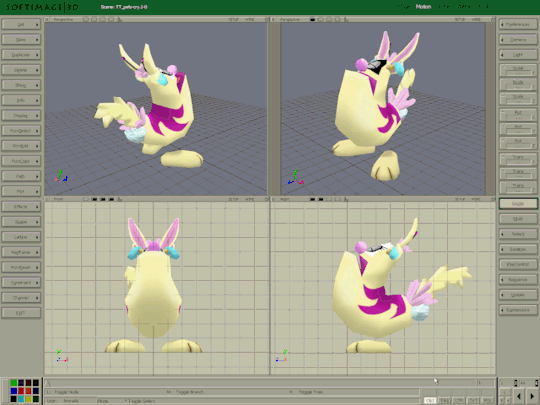


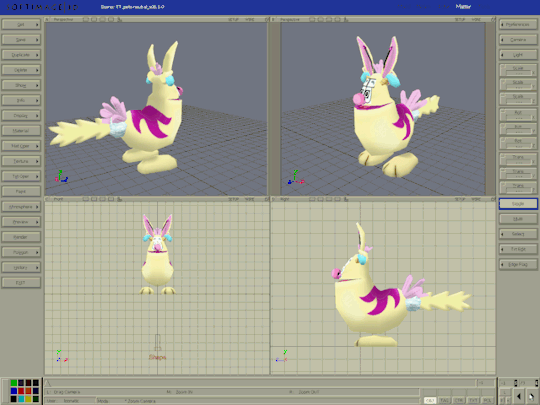
49 notes
·
View notes
Text

I CHECKED AND!! Laure Clemansaud-Madia is real, they are a blender artist and have worked on many animations including...BUNNY MALONEY!! On the Experience part, you can scroll down to 2008-2009 and see that they worked on the character and crowd animations for Bunny Maloney on XSI Softimage! THAT VIDEO BEFORE THIS POST WAS A BIG FIND. KEEP IT COMING GSGHSVGHS
#bunny maloney#partically lost media#lost media#obscure media#animation#FOUND CG Bunny Maloney Behind The Scenes video
3 notes
·
View notes
Text
Avatar: the songcord of artistic technology.
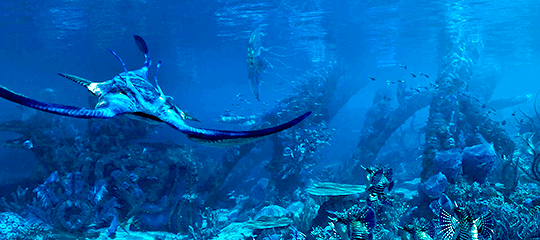
Kaltxì alu kop à tous les cinéphiles! Aujourd'hui, nous allons parler d'un film qui a complètement changé la donne dans l'industrie du cinéma: "Avatar" de James Cameron. Ce film, sorti en 2009, a non seulement captivé les spectateurs du monde entier avec son univers époustouflant, mais il a également redéfini les frontières de l'art numérique et influencé les technologies futures.
Comment l'art numérique dans "Avatar" a-t-il révolutionné l'industrie cinématographique et influencé les technologies futures ?
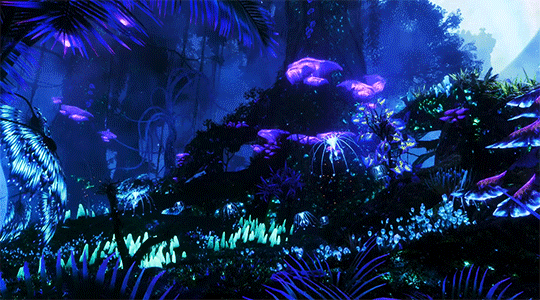
Comme l'a dit James Cameron :"La technologie doit servir l'histoire et non l'inverse”
Et dans "Avatar", plusieurs technologies ont été utilisées pour créer l'univers remarquable du film.
L'une d'entre elles est la capture des mouvements, qui permet d'enregistrer les mouvements des acteurs et de les transposer sur des personnages virtuels. Le système de capture de mouvement utilisé dans "Avatar" impliquait pas moins de 132 caméras infrarouges et permettait une précision au millimètre près dans la reproduction des mouvements des acteurs.
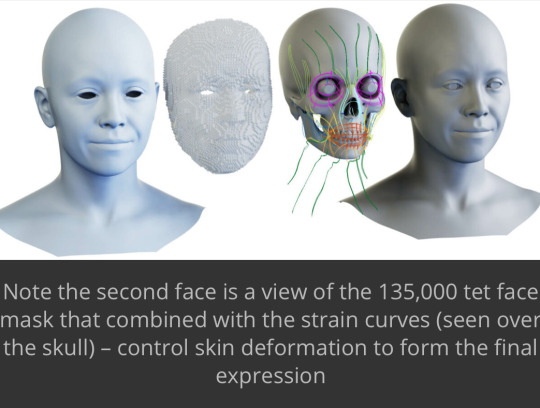
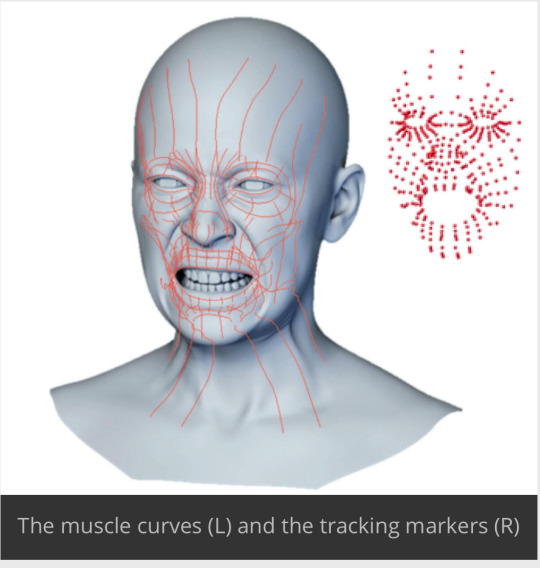
Cela a permis d'apporter vie aux Na'vi et de rendre leurs expressions et actions plus authentiques. De plus, la capture des expressions faciales a été utilisée pour enregistrer les expressions et les émotions des acteurs et les transférer sur les personnages virtuels. Cela a contribué à créer une connection émotionnelle plus forte avec les personnages du film. Zoe Saldana, l'actrice principale qui joue le rôle de Neytiri, a partagé son expérience sur le processus de capture de mouvement, décrivant comment elle devait porter un costume spécial et comment elle devait apprendre à bouger comme un Na'vi.
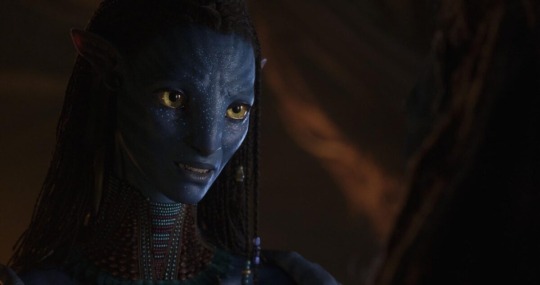
"C'était un défi, mais aussi une expérience incroyablement enrichissante. J'ai vraiment eu l'impression de repousser mes limites en tant qu'actrice."
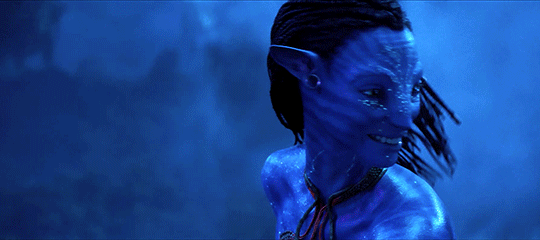
Ensuite, parlons de la création de l'environnement de Pandora. Pour donner vie à cet univers fantastique, les équipes de production ont utilisé des logiciels de modélisation 3D avancés tels que Autodesk Maya et Softimage XSI. Un autre élément clé du succès de "Avatar" est le rendu 3D stéréoscopique. Cette technique a permis de donner au film une profondeur et une immersion sans précédent, rendant l'expérience visuelle encore plus captivante. Et derrière cette prouesse technique, il y a Joe Letteri, le superviseur des effets visuels du film, qui a joué un rôle crucial dans l'intégration de cette technologie, assurant que le rendu 3D stéréoscopique était utilisé de manière innovante et efficace.
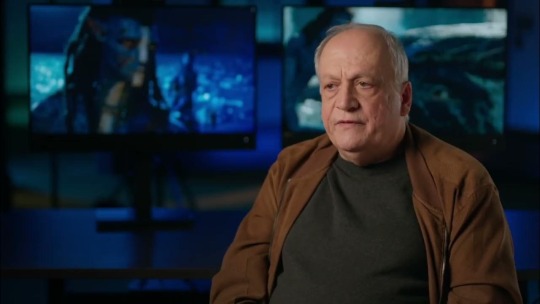
"Le but était de créer une expérience immersive, où les spectateurs se sentent vraiment transportés dans le monde de Pandora."
Outre Maya et Softimage, d'autres logiciels comme RenderMan ont été utilisés pour le rendu final, créant un univers visuel époustouflant !
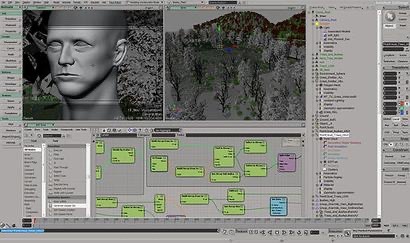
User interface of Softimage 2011
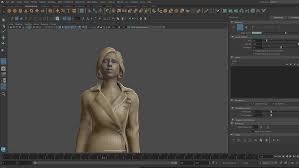
User interface of Maya 2024
Et pour repousser encore plus les limites, James Cameron a collaboré avec des entreprises technologiques telles que Weta Digital et Autodesk pour développer des outils sur mesure qui ont permis de repousser les limites de ce qui était technologiquement possible. Mais au-delà de la technologie, c'est l'art numérique qui a vraiment fait la différence. Il a été utilisé de manière stratégique pour renforcer la narration et créer un monde cohérent et immersif.
James Cameron a d'ailleurs déclaré : "L'art numérique n'est pas seulement un outil, c'est une extension de l'art traditionnel et une nouvelle façon de raconter des histoires."
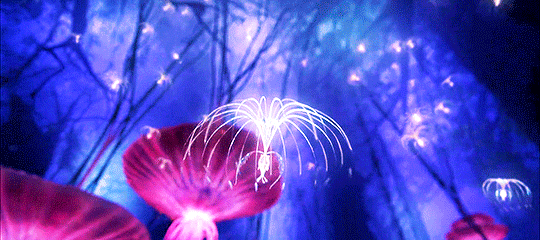
La capture de mouvement est désormais utilisée dans de nombreux autres domaines, de la médecine à la réalité virtuelle, témoignant de l'impact durable du film sur les technologies futures. ( exemple : detroit become human )
Pour finir "Avatar" de James Cameron a non seulement révolutionné l'industrie cinématographique mais a aussi influencé les développements technologiques dans les années suivantes. En repoussant les limites de la technologie et de la narration, le film a créé un univers qui continuera à inspirer !!!
"Ngenga lefpom, ulte plltxe nìwotx. Ngaru oe!"
"Kiyevame, ulte tsun nìtxan. Oel ngati kameie!"
traduction : Au revoir tout le monde passe une bonne journée ou une bonne soirée
Britney Mukanda-Faila / 20231271
Source :
5 Steps to Avatar: Reinventing Moviemaking | WIRED
Producer Jon Landau on 'Avatar's' New Technology
Zoe Saldana | Film | The Guardian
https://youtu.be/woO2dzt2y4o?si=BQNnUncHzcEbYQyM
Avatar: The Way of Water uses new cameras, new algorithms, and a ton of other new tech - The Verge
https://youtu.be/HmPitTWKudI?si=UcAEzfaDo8d-Gi-a
https://techcrunch.com/2009/11/30/10-minutes-of-avatar-footage-for-your-viewing-pleasure/
6 notes
·
View notes
Text
youtube
I had a chance to use Softimage XSI for a short while before it was shelved. Remebered back in the day where there was a lot of innovation and competition between alias wavefront and SOFTIMAGE.
0 notes
Photo

There are certain moments in movie history that change the way films are made, and that’s especially true when it comes to visual effects. In fact, you can actually trace the revolutionary moments from 1933’s King Kong to 1968’s 2001: A Space Odyssey, 1977’s Star Wars and the true crowning achievement of Steven Spielberg‘s 1993 film triumph, Jurassic Park. Jurassic Park didn’t just raise the bar for blockbuster filmmaking, it completely rewrote the rulebook and made the audience believe that dinosaurs had come back to life. But while T-Rex roars and raptor chases dominated the screen, the true magic was taking place behind the scenes, where innovation and talent brought it all to life. These rare behind-the-scenes photos give us a front-row seat to that magic in action. We see the towering animatronic T-Rex being fine-tuned on set, the artistry of Stan Winston’s creature shop, where life-sized velociraptors were sculpted with uncanny precision; and witness Spielberg—sometimes sitting cross-legged on the floor, other times grinning mid-prank or looking like he’s about to be devoured by one of his cast—orchestrating it all with the calm intensity of a master storyteller. We also get a look at the human side of the dino saga that spawned a franchise, with the cast bonding between takes, the crew deep in technical discussions and the sheer joy of making something unprecedented. Whether it’s Sam Neill and Laura Dern sharing a laugh or Jeff Goldblum gesturing animatedly while Spielberg listens, the spirit of collaboration and creativity is on full display. Welcome back to Jurassic Park! 1. Bringing the T-Rex to life ©Universal Pictures/courtesy MovieStillsDB.com On set with the full-scale animatronic T-Rex, Hollywood’s biggest diva of 1993. Rain machines, roaring hydraulics and startled crew members brought the prehistoric terror and his environment to life—just try not to let it see you move. 2. Surviving dinosaurs was easy, but what about the press tour? Frank Trapper/Corbis via Getty Images Laura Dern, Ariana Richards and Sam Neill take a break from raptors and running to flash smiles at a Jurassic Park promo event. 3. Just a little blush… and maybe a touch of terror ©Universal Pictures/courtesy MovieStillsDB.com At Stan Winston Studio, a raptor gets a final makeover before hitting the set. To be fair, even cold-blooded killers deserve to look their best in close-ups. 4. When you’re the director, even the T-Rex listens… usually ©Universal Pictures/courtesy MovieStillsDB.com Steven Spielberg gets cozy in the jaws of Jurassic Park’s most iconic star, proving once and for all that on this set, the biggest bite came with a sense of humor just as big. 5. Before the T. rex roared, it was just a wireframe wonder ©Universal Pictures/courtesy MovieStillsDB.com A peek at the early CGI magic of Jurassic Park, as Softimage software brings a dinosaur to (digital) life—one pixel at a time. This was the future in 1993. 6. The DNA of Jurassic Park ©Universal Pictures/courtesy MovieStillsDB.com Jurassic Park author Michael Crichton and director Steven Spielberg sit side by side, shaping science fiction into cinematic history. You can practically hear John Williams’ theme music playing behind them. 7. It’s all about the script ©Universal Pictures/courtesy MovieStillsDB.com Jeff Goldblum, Richard Attenborough, Laura Dern, Sam Neill and others gather for a moment of rehearsal before the chaos of dino mayhem begins. 8. Collaborating in the wild (c)Amblin Entertainment/courtesy Everett Collection Jeff Goldblum, Steven Spielberg and Laura Dern share a candid moment between takes—possibly debating Chaos Theory… or just brunch 9. The triceratops and her director (c) Universal Pictures/ Courtesy: Everett Collection Steven Spielberg relaxes with his ailing triceratops star, proving once again he’s got a soft spot for all cast members, big and small. 10. Dino sculpt squad ©Universal Pictures/courtesy MovieStillsDB.com Before the dinosaurs roared to life on screen, they were carefully sculpted in clay by the legendary artists at Stan Winston Studio—one scale at a time. 11. Filming in the badlands Murray Close/Sygma/Sygma via Getty Images Sam Neill, Laura Dern and Steven Spielberg pose in the desert during early location scouting for Jurassic Park—prior to dinos (and dust storms) taking over. 12. The director and his young star connect ©Universal Pictures/courtesy MovieStillsDB.com Director Steven Spielberg sits down for a quiet chat with young Joseph Mazzello (Tim) between dino-sized scenes on the Jurassic Park set. 13. Terminator vs. T-Rex? ©Universal Pictures/courtesy MovieStillsDB.com Arnold Schwarzenegger pays a surprise visit to Stan Winston Studios with his daughter, coming face to snout with a not-so-terrifying maquette of Jurassic Park’s T-Rex. 14. Three Jurassic minds at work ©Universal Pictures/courtesy MovieStillsDB.com Director Steven Spielberg chats with Sam Neill and producer Kathleen Kennedy on set, likely explaining how to survive a close encounter with a velociraptor. 15. Who’s a Good Girl? (c)MCA/Universal Pictures: Courtesy: Everett Collection Stan Winston shares a tender moment with the full-scale animatronic T-Rex—just your average day petting 9,000 pounds of hydraulic-powered movie magic. 16. T-Rex Gets Wired ©Universal Pictures/courtesy MovieStillsDB.com An early digital model of the T-Rex attack scene, rendered in Softimage 3D, shows how groundbreaking CGI was just beginning to roar to life in 1993. 17. The Raptors, before and after ©Universal Pictures/courtesy MovieStillsDB.com On the left, pure hydraulics and wiring. On the right, the wonder of cinema. The incredible animatronic raptors built by Stan Winston Studio were both terrifying and technological marvels. 18. Staging the hatchery scene ©Universal Pictures/courtesy MovieStillsDB.com Director Steven Spielberg talks through the iconic hatchery scene with Jeff Goldblum, Richard Attenborough, Sam Neill and B.D. Wong—plus a clutch of very convincing prop dinosaur eggs. 19. Setting up the Raptor showdown ©Universal Pictures/courtesy MovieStillsDB.com Stan Winston and his team direct one of the film’s Velociraptors in the control room climax—proving once again that practical effects without CGI can still steal the scene. 20. Filming the triceratops scene ©Universal Pictures/courtesy MovieStillsDB.com Laura Dern, Sam Neill and the crew gather around the full-scale triceratops, a Stan Winston creation so lifelike that it stole the scene—and a few hearts. More '90s entertainment 10 ‘Titanic’ Behind-the-Scenes Photos You’ll Love—Leo and Kate’s Offscreen Bond Is Everything! 10 Rare (but Tasty) ‘Silence of the Lambs’ Behind-the-Scenes Photos You’ve Never Seen Before Jeff Goldblum Movies: Why We Can't Get Enough of the Charismatic Icon Source link
0 notes
Photo

There are certain moments in movie history that change the way films are made, and that’s especially true when it comes to visual effects. In fact, you can actually trace the revolutionary moments from 1933’s King Kong to 1968’s 2001: A Space Odyssey, 1977’s Star Wars and the true crowning achievement of Steven Spielberg‘s 1993 film triumph, Jurassic Park. Jurassic Park didn’t just raise the bar for blockbuster filmmaking, it completely rewrote the rulebook and made the audience believe that dinosaurs had come back to life. But while T-Rex roars and raptor chases dominated the screen, the true magic was taking place behind the scenes, where innovation and talent brought it all to life. These rare behind-the-scenes photos give us a front-row seat to that magic in action. We see the towering animatronic T-Rex being fine-tuned on set, the artistry of Stan Winston’s creature shop, where life-sized velociraptors were sculpted with uncanny precision; and witness Spielberg—sometimes sitting cross-legged on the floor, other times grinning mid-prank or looking like he’s about to be devoured by one of his cast—orchestrating it all with the calm intensity of a master storyteller. We also get a look at the human side of the dino saga that spawned a franchise, with the cast bonding between takes, the crew deep in technical discussions and the sheer joy of making something unprecedented. Whether it’s Sam Neill and Laura Dern sharing a laugh or Jeff Goldblum gesturing animatedly while Spielberg listens, the spirit of collaboration and creativity is on full display. Welcome back to Jurassic Park! 1. Bringing the T-Rex to life ©Universal Pictures/courtesy MovieStillsDB.com On set with the full-scale animatronic T-Rex, Hollywood’s biggest diva of 1993. Rain machines, roaring hydraulics and startled crew members brought the prehistoric terror and his environment to life—just try not to let it see you move. 2. Surviving dinosaurs was easy, but what about the press tour? Frank Trapper/Corbis via Getty Images Laura Dern, Ariana Richards and Sam Neill take a break from raptors and running to flash smiles at a Jurassic Park promo event. 3. Just a little blush… and maybe a touch of terror ©Universal Pictures/courtesy MovieStillsDB.com At Stan Winston Studio, a raptor gets a final makeover before hitting the set. To be fair, even cold-blooded killers deserve to look their best in close-ups. 4. When you’re the director, even the T-Rex listens… usually ©Universal Pictures/courtesy MovieStillsDB.com Steven Spielberg gets cozy in the jaws of Jurassic Park’s most iconic star, proving once and for all that on this set, the biggest bite came with a sense of humor just as big. 5. Before the T. rex roared, it was just a wireframe wonder ©Universal Pictures/courtesy MovieStillsDB.com A peek at the early CGI magic of Jurassic Park, as Softimage software brings a dinosaur to (digital) life—one pixel at a time. This was the future in 1993. 6. The DNA of Jurassic Park ©Universal Pictures/courtesy MovieStillsDB.com Jurassic Park author Michael Crichton and director Steven Spielberg sit side by side, shaping science fiction into cinematic history. You can practically hear John Williams’ theme music playing behind them. 7. It’s all about the script ©Universal Pictures/courtesy MovieStillsDB.com Jeff Goldblum, Richard Attenborough, Laura Dern, Sam Neill and others gather for a moment of rehearsal before the chaos of dino mayhem begins. 8. Collaborating in the wild (c)Amblin Entertainment/courtesy Everett Collection Jeff Goldblum, Steven Spielberg and Laura Dern share a candid moment between takes—possibly debating Chaos Theory… or just brunch 9. The triceratops and her director (c) Universal Pictures/ Courtesy: Everett Collection Steven Spielberg relaxes with his ailing triceratops star, proving once again he’s got a soft spot for all cast members, big and small. 10. Dino sculpt squad ©Universal Pictures/courtesy MovieStillsDB.com Before the dinosaurs roared to life on screen, they were carefully sculpted in clay by the legendary artists at Stan Winston Studio—one scale at a time. 11. Filming in the badlands Murray Close/Sygma/Sygma via Getty Images Sam Neill, Laura Dern and Steven Spielberg pose in the desert during early location scouting for Jurassic Park—prior to dinos (and dust storms) taking over. 12. The director and his young star connect ©Universal Pictures/courtesy MovieStillsDB.com Director Steven Spielberg sits down for a quiet chat with young Joseph Mazzello (Tim) between dino-sized scenes on the Jurassic Park set. 13. Terminator vs. T-Rex? ©Universal Pictures/courtesy MovieStillsDB.com Arnold Schwarzenegger pays a surprise visit to Stan Winston Studios with his daughter, coming face to snout with a not-so-terrifying maquette of Jurassic Park’s T-Rex. 14. Three Jurassic minds at work ©Universal Pictures/courtesy MovieStillsDB.com Director Steven Spielberg chats with Sam Neill and producer Kathleen Kennedy on set, likely explaining how to survive a close encounter with a velociraptor. 15. Who’s a Good Girl? (c)MCA/Universal Pictures: Courtesy: Everett Collection Stan Winston shares a tender moment with the full-scale animatronic T-Rex—just your average day petting 9,000 pounds of hydraulic-powered movie magic. 16. T-Rex Gets Wired ©Universal Pictures/courtesy MovieStillsDB.com An early digital model of the T-Rex attack scene, rendered in Softimage 3D, shows how groundbreaking CGI was just beginning to roar to life in 1993. 17. The Raptors, before and after ©Universal Pictures/courtesy MovieStillsDB.com On the left, pure hydraulics and wiring. On the right, the wonder of cinema. The incredible animatronic raptors built by Stan Winston Studio were both terrifying and technological marvels. 18. Staging the hatchery scene ©Universal Pictures/courtesy MovieStillsDB.com Director Steven Spielberg talks through the iconic hatchery scene with Jeff Goldblum, Richard Attenborough, Sam Neill and B.D. Wong—plus a clutch of very convincing prop dinosaur eggs. 19. Setting up the Raptor showdown ©Universal Pictures/courtesy MovieStillsDB.com Stan Winston and his team direct one of the film’s Velociraptors in the control room climax—proving once again that practical effects without CGI can still steal the scene. 20. Filming the triceratops scene ©Universal Pictures/courtesy MovieStillsDB.com Laura Dern, Sam Neill and the crew gather around the full-scale triceratops, a Stan Winston creation so lifelike that it stole the scene—and a few hearts. More '90s entertainment 10 ‘Titanic’ Behind-the-Scenes Photos You’ll Love—Leo and Kate’s Offscreen Bond Is Everything! 10 Rare (but Tasty) ‘Silence of the Lambs’ Behind-the-Scenes Photos You’ve Never Seen Before Jeff Goldblum Movies: Why We Can't Get Enough of the Charismatic Icon Source link
0 notes
Text
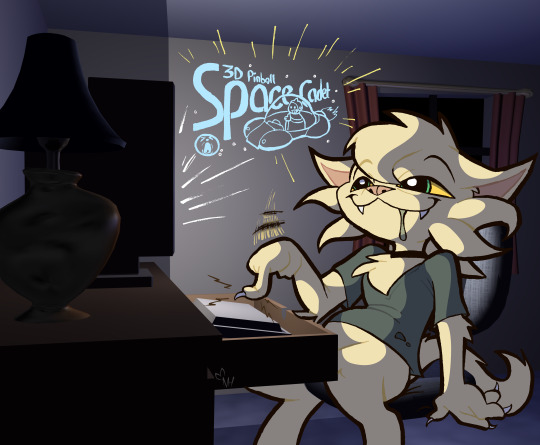
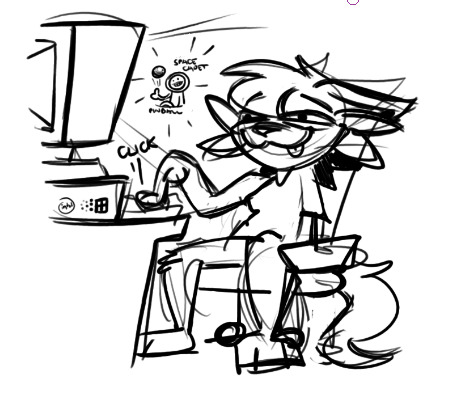
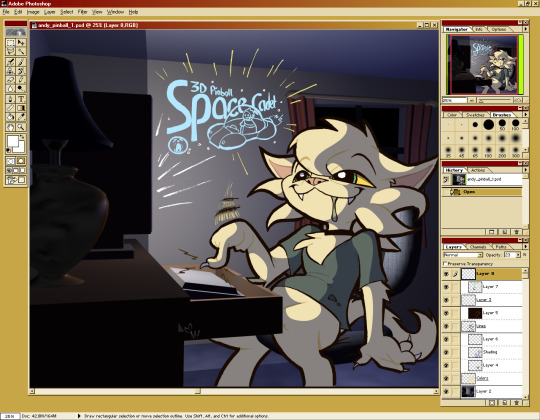
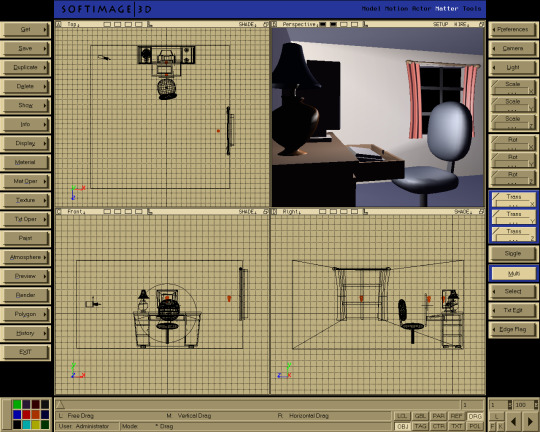
When you set up an old-school Windows computer workstation...
Originally started out as a Drawpile doodle but I made it an actual drawing on Windows 2000.
#andy#oc#furry#anthro#mixed media#2023#windows 2000#softimage 3d#crt#vintage gaming#retro gaming#space cadet#pinball
55 notes
·
View notes
Text
Research: Maya
Autodesk Maya, also known as just Maya, is a professional 3D modelling software owned by Autodesk but originally developed by Alias. Maya was originally a software based on code of other Alias projects and other code bases, such as from Wavefront Technologies and Thomson Digital Image, put into one package with other added features with the name Maya. In 1995, Silicon Graphics bought both Alias and Wavefront, with Wavefront now merged with the Maya project.
Dinosaur
Dinosaur is a 2000 movie from Walt Disney Studios. The development of the movie was incredibly complex, mainly in terms of filming the backgrounds, but the movie was also a 3D marvel closely related to Maya’s development as it was used for the character models alongside other software like Softimage 3D. For character animation, the characters would start out at a skeletal form and then edited in three different prorgrams, one of them being Maya to use the Mug Shot feature to create lip-syncing. Disney also helped with Maya’s features, as they requested the option of personified interfaces, which is a feature Maya is best known for.

Uncharted 4
Uncharted 4 is a 2016 game by Naughty Dog. The main thing to note is Uncharted 4’s graphical upgrade from Uncharted 3. With more advanced technology and more experienced artists, elements like environments and especially character models could be a lot more detailed. It is noted that in Uncharted 3, Drake’s entire skeleton is made up of 250 bones while his face alone in Uncharted 4 has 500 bones.

The Witcher 3
The Witcher 3 is a 2015 game by CDProjektred. The Witcher 3 has highly detailed yet stylised character models, especially on the faces. The faces were all referenced from real people, from actors working on the game to random people who partook in a contest to have a model based on them.

Shrek
Shrek is a 2001 movie by Dreamworks. While Pacific Data Images, who were animation partners with Dreamworks, used an in-house 3D software for the animation overall, they used Maya for more complicated details , such as clothing, fur and hair textures and movement.

0 notes
Text
なかよしインターネッツ285アペンディックス(その1)
光栄なことにイトッポイドさんのなかよしインターネッツにゲストで出演しました。Spotify・YouTube・Apple Podcastsで聴けます。本当にありがとうございます。このポストでは放送でお話しした内容を補っていけたらと思います。URLもなるべく載せられるものを掲載します。
その本に自分いますよ
紙ラボさんとかるみねさんのPLOTTERや、 佐野章核さんとcube Tanakaさんのjadda+、RebRankさんのDoujin Game Package Design Vol.01の話です。
C-media records
https://www.c-media.org/ 2001年から岡山県で活動しているレーベル、全員デザインも音楽もやる人が集まっています。CDは全て手作りで、2024年の今でもCD-Rを焼いています。CDのデザインはこんな感じです。毎年秋のM3と冬コミに参加しています。最近でたCDはこちら。
ArtPad II Pro
これです。ArtSchool Dabblerがついてきました。その後のタブレット遍歴はArtPad II Pro→bamboo→bamboo→CintiQという感じでした。
DoGA
こちらです。当時の3Dは3D studio max・Lightwave・Softimage 3D・Maya・Shade・trueSpace・Metasequoia・六角大王などなどで、その中でもDoGAは超初心者向けなところから始まっていて遊びやすかったです。Webサイトが当時から変わってなくてちょっと感動しています。
midiを打ったりとか
Music Studio Standardとか使ってました。その後ReBirth RB-338を経てReasonに至ります。
PROJECT-WIVERN
こちらで見れます。当時は動画コンテンツが少なかったので何度も見直してました。ダイジェスト版のBGMもすごい好きでした。
新海さん
彼女と彼女の猫あたりの時代です。これも当時動画コンテンツが少なかったのでめちゃくちゃ見てました。「誰か助けて」のところだけ新海さんじゃない女性の声になるあたりが演出としても非常に印象的でした。
メダロット
2Xの幼少期に多大な影響を与えました。メダ2のストンミラーあたりの話がやばかったです。メダロットのサイトも作ったし初めての同人誌もメダロットのものを買ったし人の繋がりもメダロット起因のものが非常に多いです。
コングルGood
収録後に「あれOH!MYコンブだわ」となりました。大変失礼いたしました。
CSSが未発達時代の個人サイト
Excel方眼紙みたいな作り方かとは思うんですが先日サイトがまだ残っていることを知って久しぶりに読み漁りました。
Flashの道
Flashは4とか5あたりからのユーザーでした。そしてActionScriptを覚えたのはHAKUHINさんのサイトです。このサイトでスクリプトはもとより変数や引数、データ型などスクリプトのいろはを学びました。ActionScriptはJavaScriptと文法が近いのでその後のキャリアにも大きく影響しました。
当時どんなサイト見ていたんですか?
こういうサイトを見ていました。
MONO*crafts(yugop.com)
EYE4U
B L A C K W H I T E
Pale Light
2advanced studios
(mt) Media Temple
Bionic Systems
CBCNet
Shift
04.jp.org
May1stReboot
事前登録して5月1日に一斉にサイトリニューアルするという企画。tatsさん(有馬トモユキさん)とかとああだこうだやってた時期です。FlashにBGMのループを忍ばしてインタラクティブさを出したりなどしていました。今でもインターネットアーカイブに当時のサイトなどがあります。
8月31日までにお絵描き掲示板を使いまくる
使っていたお絵かき掲示板はしぃペインターです。今思うとpixivファンタジアみたいな企画でした。この企画のためにAEで映像作ったり専用の曲を作ったりなどしました。
デザイナーのヒーロー像
今聞き返すとthaのみなさまばかりなのですが川上俊さんやセミトラさんやSLNさんやimage diveさんなどなど他にも多くの方々がいらっしゃいます。そして今もなお読み返すのはQantaさんの「私は広告賞を獲りたかった」です。メチャクチャ熱い記事なのでぜひ読んで欲しいです。
後半はこちら
0 notes
Text
The Evolution of 3D Animation Software: Trends and Future Developments
The world of 3D animation has undergone a remarkable transformation over the past few decades, driven by the rapid advancements in software technology. From the early days of clunky, resource-intensive programs to the highly sophisticated and user-friendly tools of today, the evolution of 3D animation software has been nothing short of revolutionary. Animation institutes in Pune play a crucial role in this revolution, offering cutting-edge training and resources to help aspiring animators master these advanced tools and techniques.
The Early Days of 3D Animation
In the early days of computer-generated imagery (CGI), 3D animation software was the domain of specialized technicians and computer scientists. Programs like Softimage, Alias, and Wavefront were the industry standards, requiring extensive technical knowledge and significant computing power to operate effectively.
These early 3D animation tools were often complex and intimidating, with steep learning curves that limited their accessibility to the broader creative community. However, they laid the foundation for the more user-friendly and powerful software that would emerge in the years to come.
The Rise of Autodesk Maya and 3DS Max
The late 1990s and early 2000s saw the rise of two industry-leading 3D animation software programs: Autodesk Maya and 3DS Max. These powerful tools, with their intuitive interfaces and robust feature sets, quickly became the go-to solutions for professional animators, visual effects artists, and game developers.
The introduction of Maya and 3DS Max marked a significant shift in the 3D animation landscape. These programs made it easier for artists to create complex, high-quality 3D content, empowering a new generation of creative professionals to push the boundaries of what was possible in the medium.
The Democratization of 3D Animation
As 3D animation software continued to evolve, a new trend emerged: the democratization of the medium. Affordable and user-friendly programs like Blender, Cinema 4D, and Houdini began to emerge, making 3D animation accessible to a wider audience, including hobbyists, students, and independent creators.
This democratization of 3D animation software has had a profound impact on the industry. It has enabled more diverse voices and perspectives to enter the field, leading to a proliferation of innovative and experimental animated content. Additionally, the availability of these tools has fostered a thriving community of 3D artists, who share knowledge, collaborate, and push the boundaries of what is possible in the medium.
The Rise of Real-Time 3D Animation
One of the most significant recent developments in 3D animation software has been the rise of real-time rendering and animation. Programs like Unity and Unreal Engine have revolutionized the way 3D content is created and experienced, allowing for the seamless integration of animation into interactive environments and virtual reality experiences.
Real-time 3D animation has opened up new creative possibilities, enabling animators to work in more dynamic and responsive ways. It has also paved the way for the development of virtual production techniques, where 3D animation is blended with live-action footage in real-time, creating a more immersive and collaborative filmmaking process.
The Future of 3D Animation Software
As we look to the future, the evolution of 3D animation software is poised to continue at a rapid pace. Here are some of the key trends and developments we can expect to see:
Artificial Intelligence and Machine Learning: The integration of AI and machine learning into 3D animation software will revolutionize the creative process, automating repetitive tasks, enhancing character animation, and enabling more intelligent and adaptive 3D content.
Virtual and Augmented Reality: The continued advancements in VR and AR technologies will drive the development of 3D animation software that is optimized for immersive experiences, allowing animators to create and manipulate 3D worlds in real-time.
Cloud-Based Collaboration: The shift towards cloud-based platforms and remote collaboration will transform the way 3D animation projects are managed and executed, enabling distributed teams to work together seamlessly on complex productions.
Real-Time Photorealism: As rendering technologies continue to evolve, 3D animation software will become increasingly capable of producing photorealistic content in real-time, blurring the line between computer-generated imagery and live-action footage.
Democratization and Accessibility: The trend towards more user-friendly and accessible 3D animation software will continue, empowering a new generation of creators to explore the medium and push the boundaries of what is possible.
The evolution of 3D animation software has been a remarkable journey, and the future holds even more exciting possibilities. As the industry continues to innovate and adapt to the changing technological landscape, the potential for 3D animation to captivate, inspire, and transform audiences around the world will only continue to grow.
0 notes
Text
Junior Asparagus as Thomas (Softimage) "Incoming! Boysenberry at three o'clock!" Models by JYStudios and WhataRecorder Buddy Rig by JYStudios

0 notes
Text
I got permission from Cyan to share the images I took while working on this!

So this is the first version I tried: SoftImage 3D 3.7. This version was released in 1997, same as Riven, so it's close to the version they would have used to make the game. This was mainly to confirm I could open the files at all. What you're seeing is that 5-way rotating-chamber puzzle from near the start of the game

Next I tried out SoftImage 3D 4.0: This is the last version before the rewrite. It worked, but didn't really add anything that 3.7 didn't have.
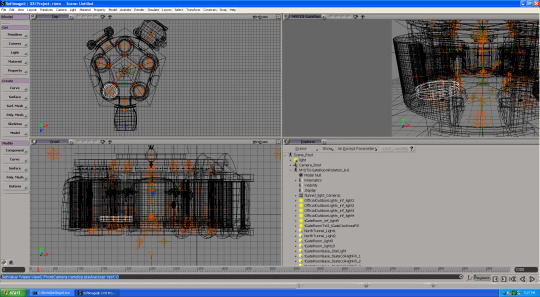
Next up, SoftImage|XSI 1.5! This is a complete rewrite of SoftImage 3D, and a much more modern program. It couldn't open the Riven project directly, but it was able to import the scenes/models/textures into a new scene. So maybe if I import them, then save it back out as a SoftImage|XSI project?

Finally, SoftImage 2015. The latest and last version. (the lack of 3D views is a VM issue I didn't fix). It can still import those projects I made in SoftImage|XSI 1.5, so we can now go from the original datafiles to a "modern" 3D program in two steps:
Import scenes and such into SoftImage|XSI 1.5, save them back out as an XSI project
Open the XSI project in SoftImage 2015.
From there, they could export from SoftImage 2015 into Blender or whatever 3D tools they were using. Hell, they could export straight into Unreal Engine if they wanted.
All in all, it was a fun couple of hours of digging through old software and trying to get them to work properly.

The Riven HD remake/remaster is out! You should definitely play it, because 1. it's a great game that looks even better 2. I helped with it, in a very tiny way.
A couple years ago they got in touch and asked if I could help them with a software archaeology problem: They still had the datafiles from when Riven was made, but they didn't really know how to open them anymore. So I did some spelunking through different versions of late-90s 3D software and figured out a conversion path they could use to open the old assets in a modern(ish) 3d program, then convert them to whatever they needed. They had offered to pay me but I did it for free (because it's MYST. I have always loved this series, I own all the books, I still have the 5-CD copy of the game!) and just asked for some credit. I'm happy to see that I got it!
I've not played the full release yet (time and money problems) but I did check out the demo, and it looks amazing and plays great.
567 notes
·
View notes



